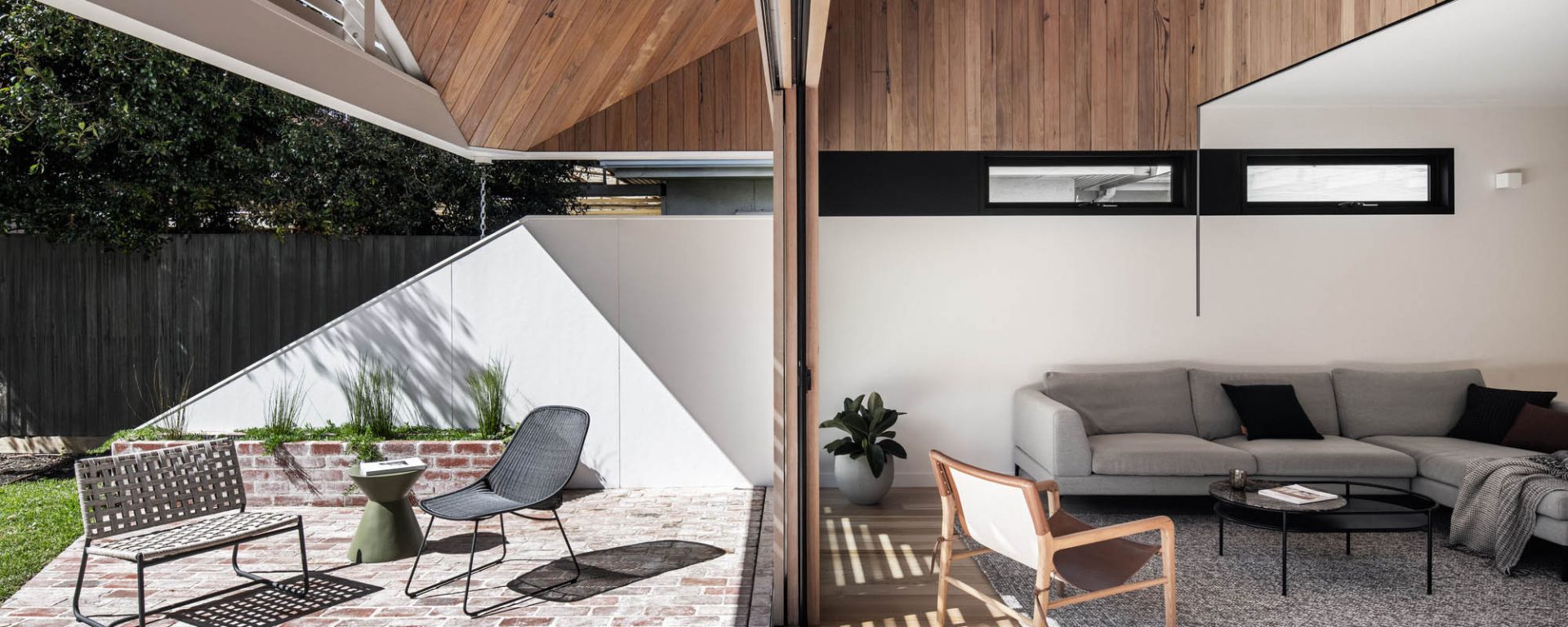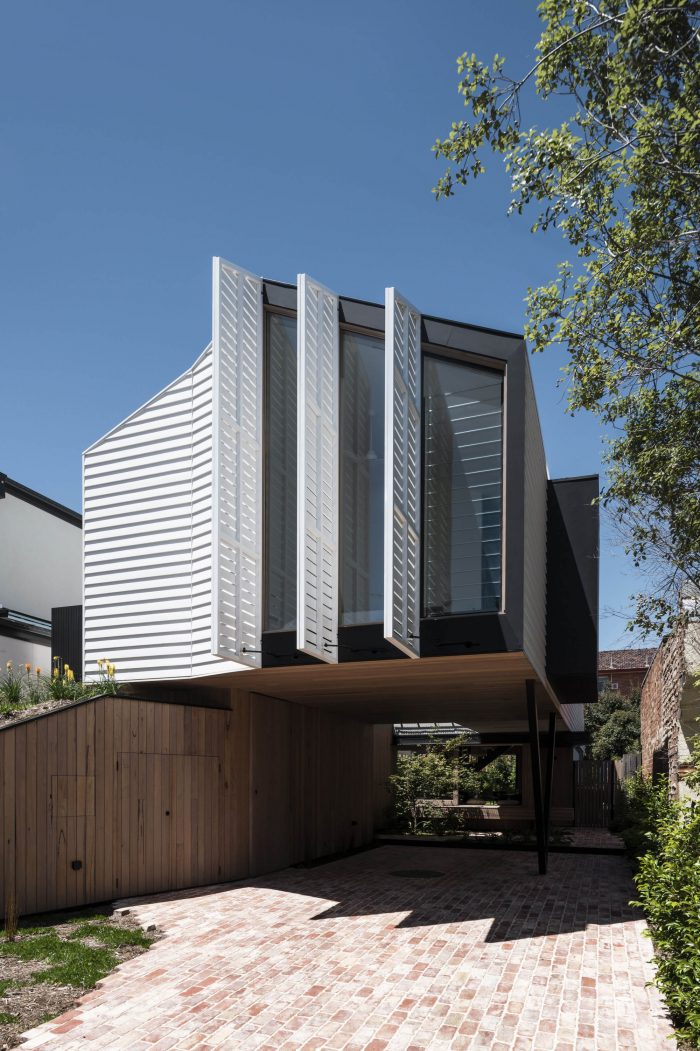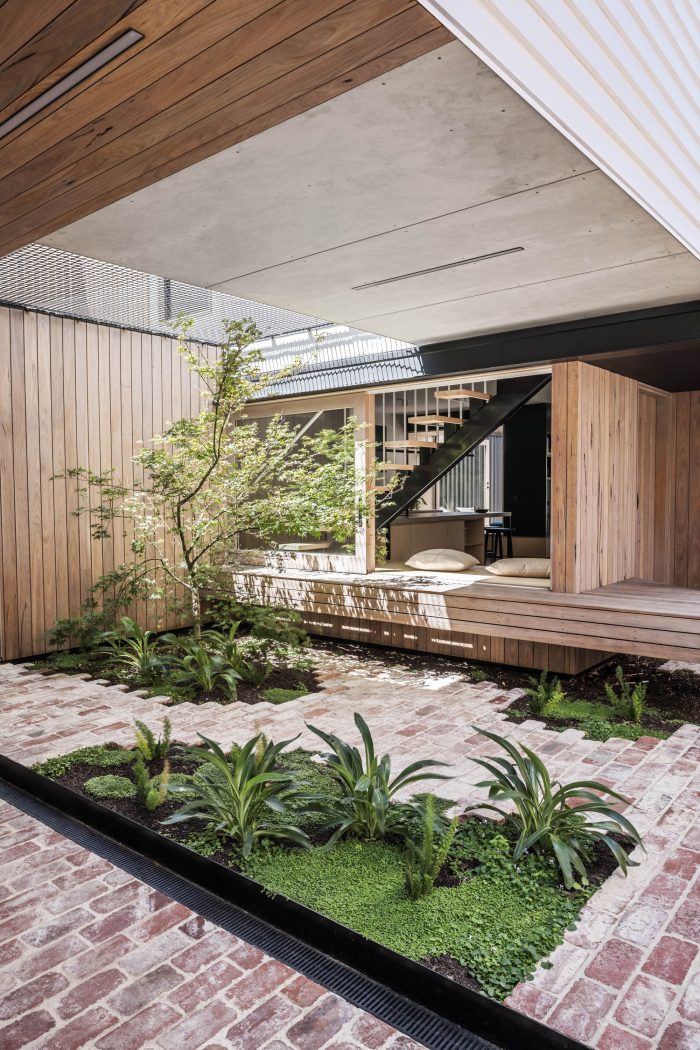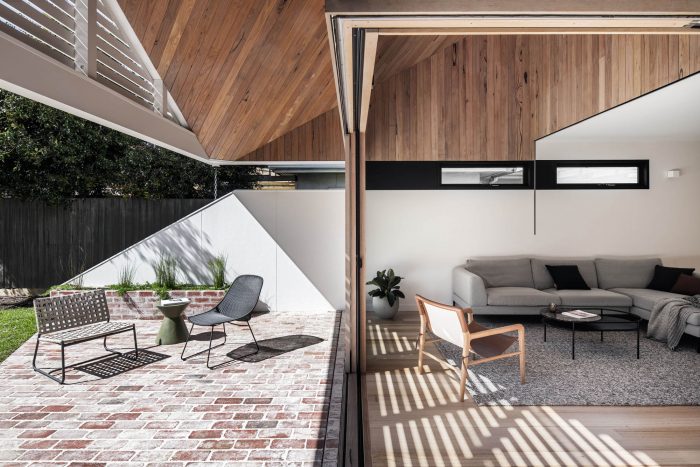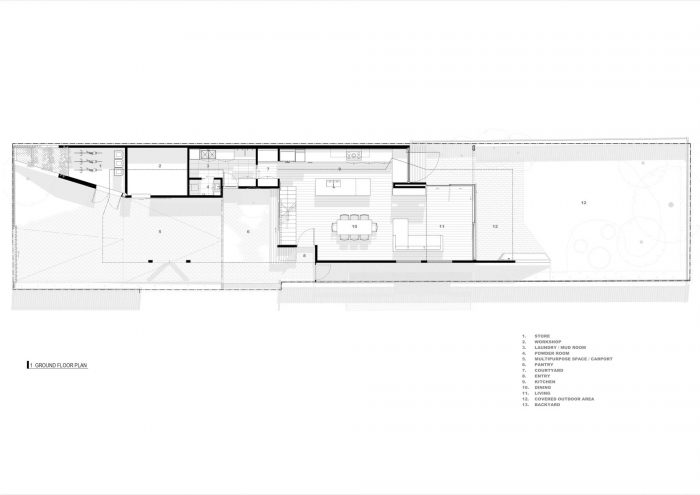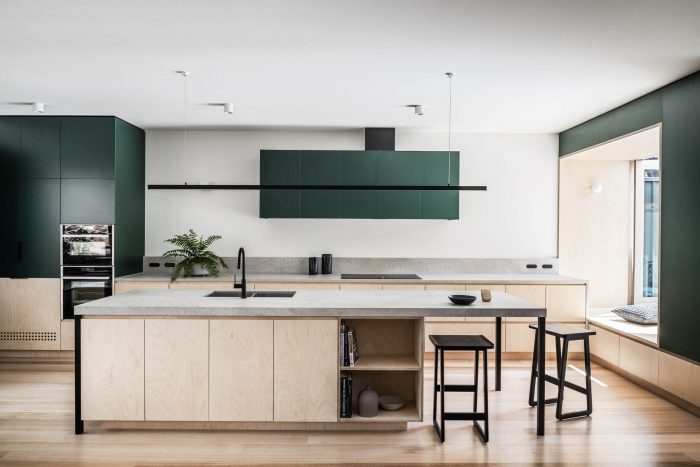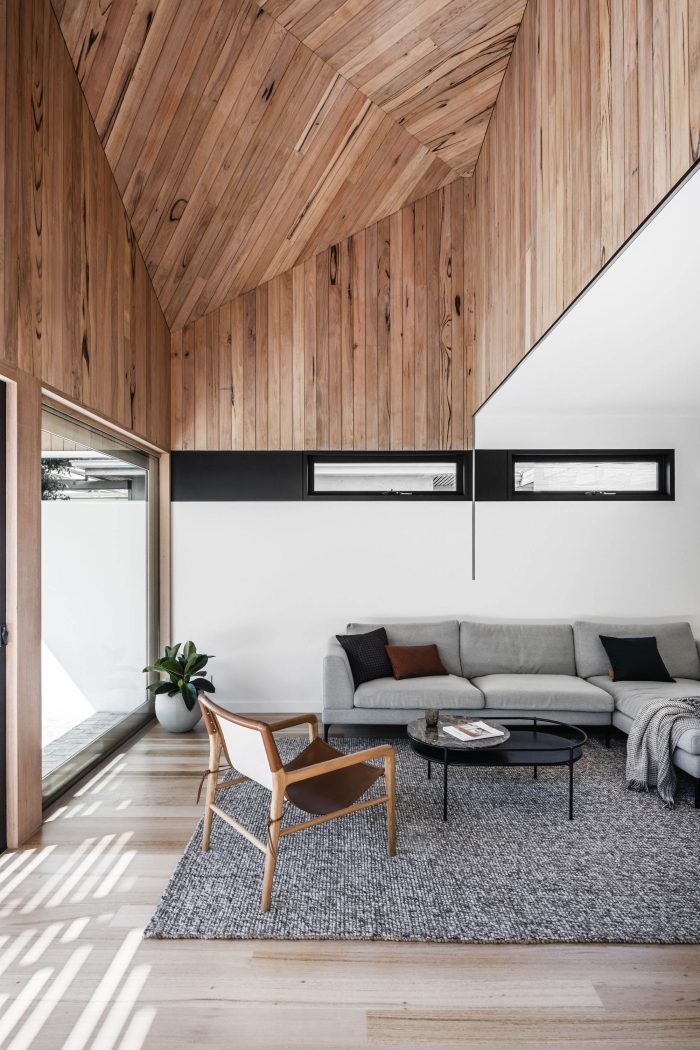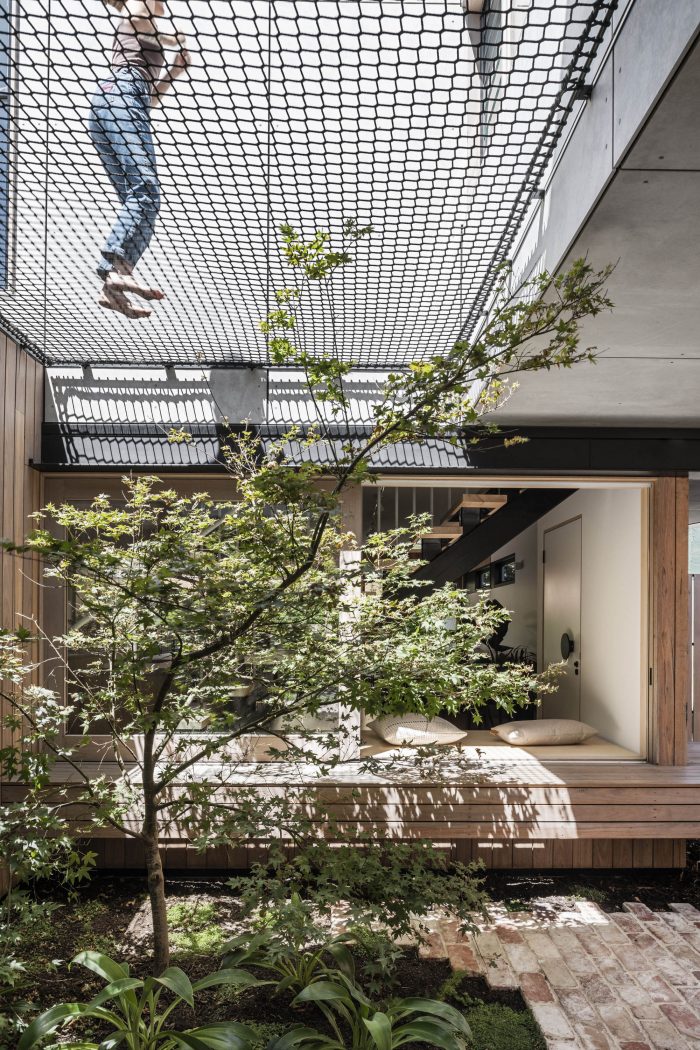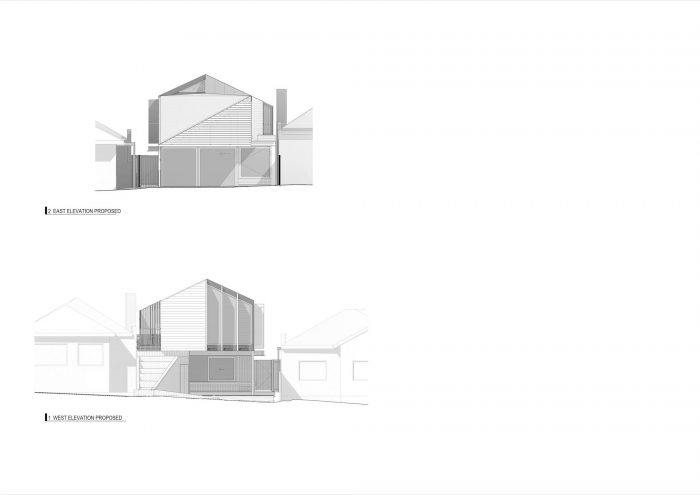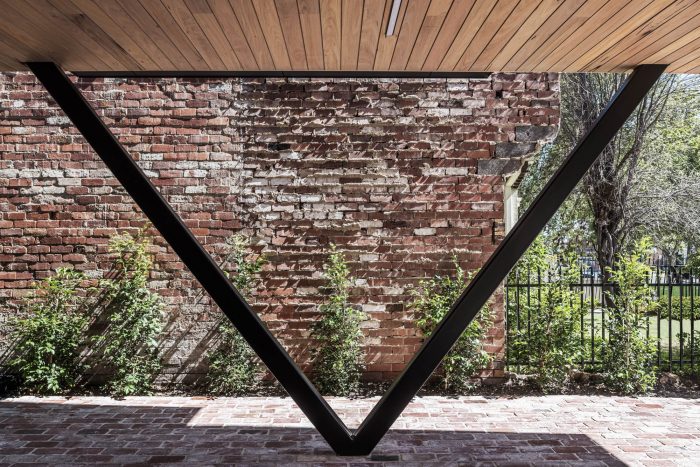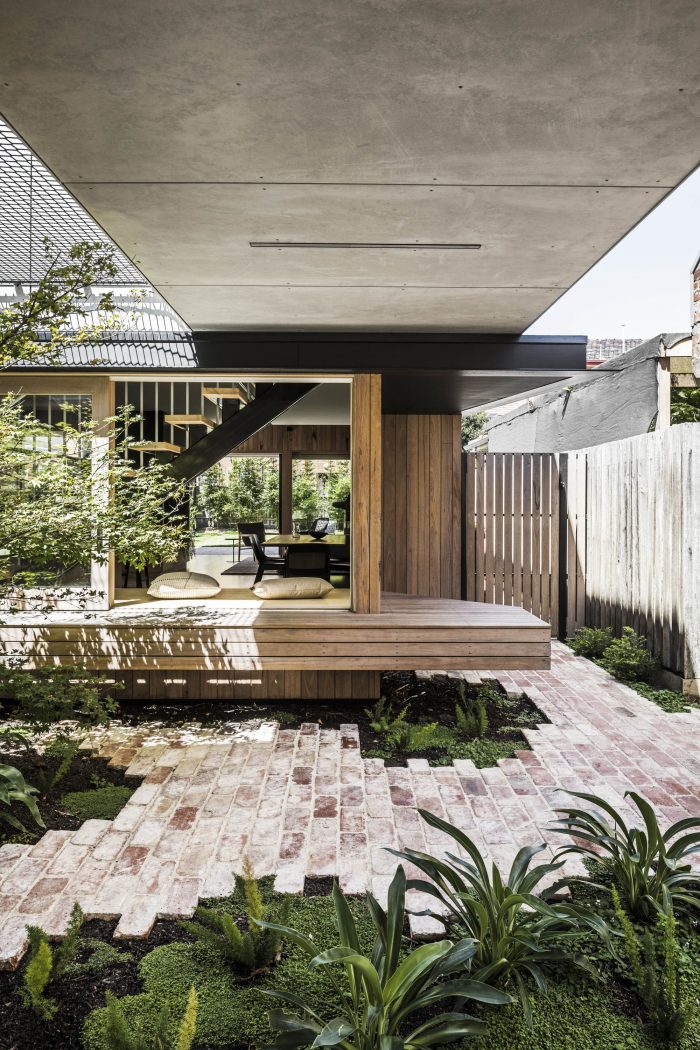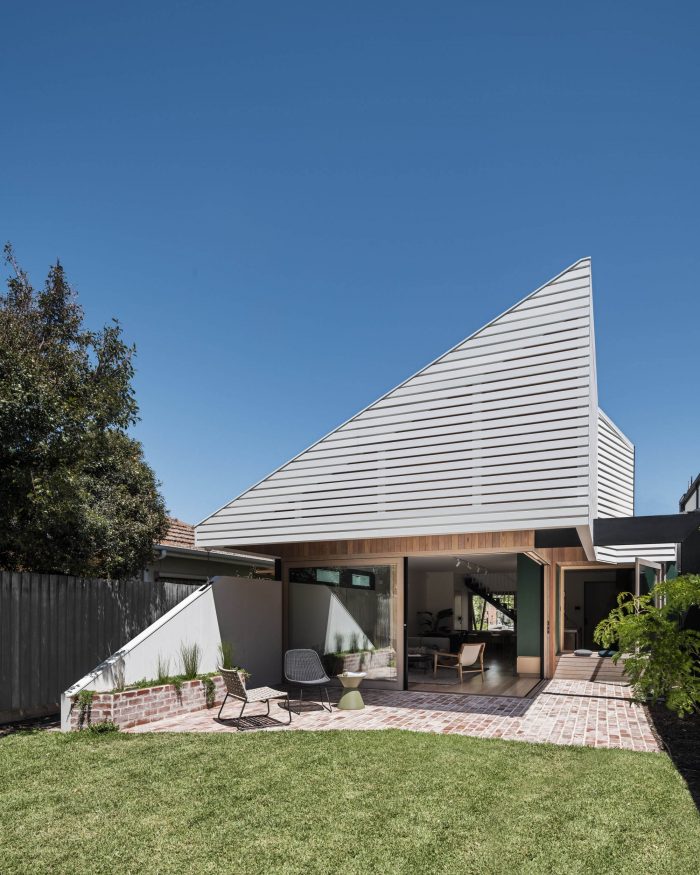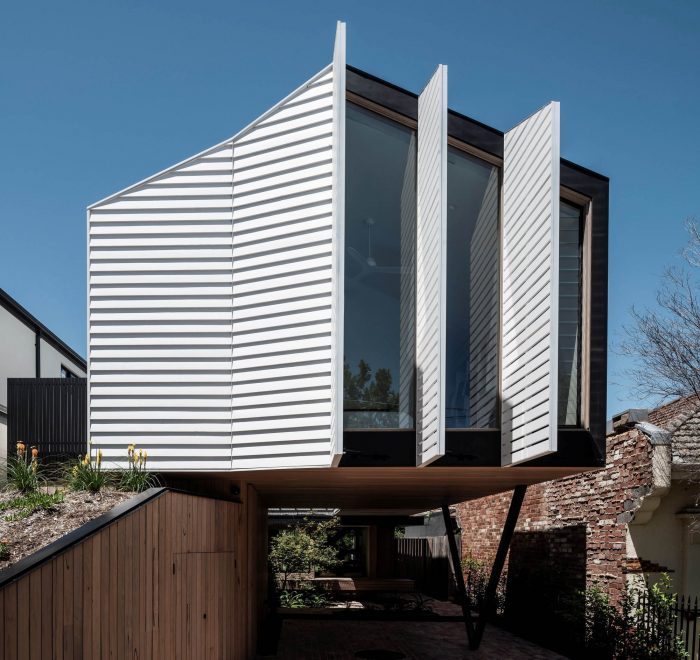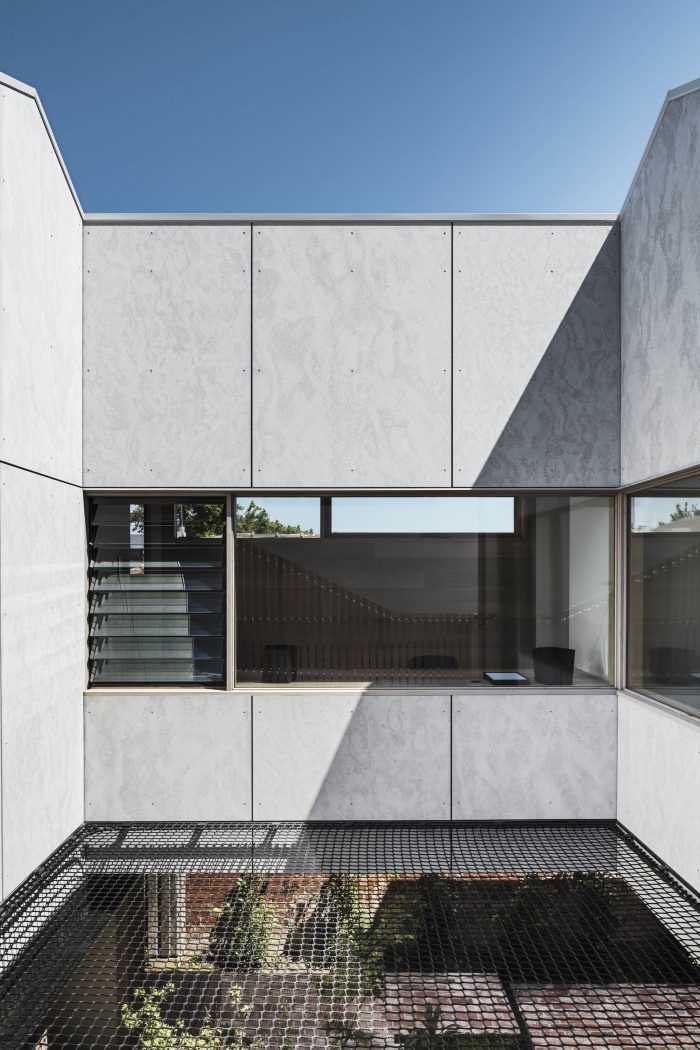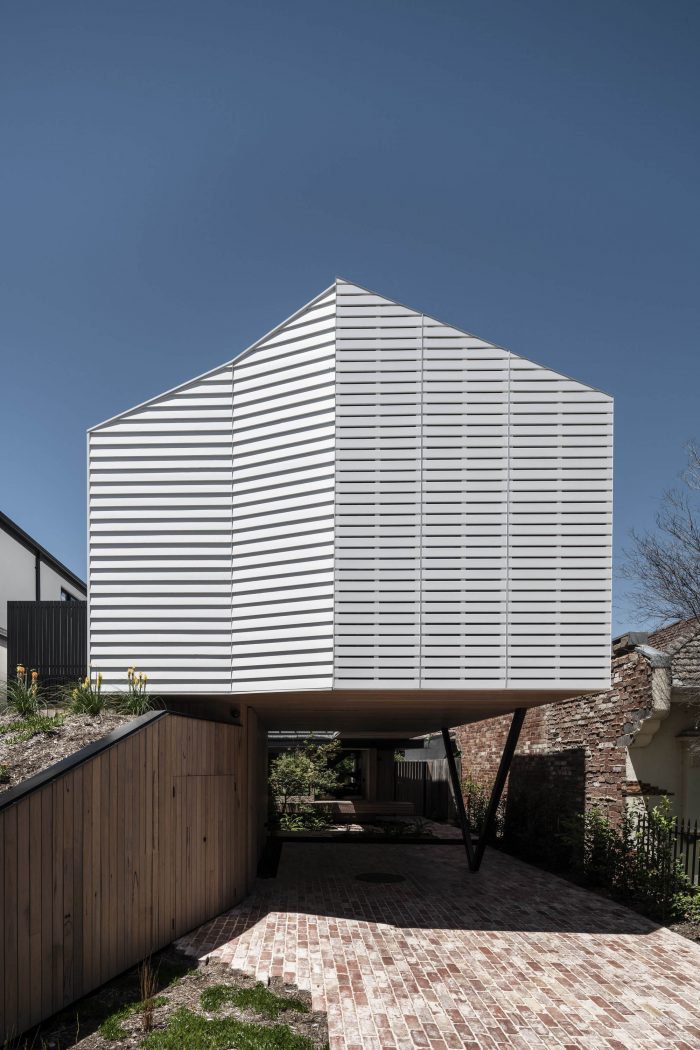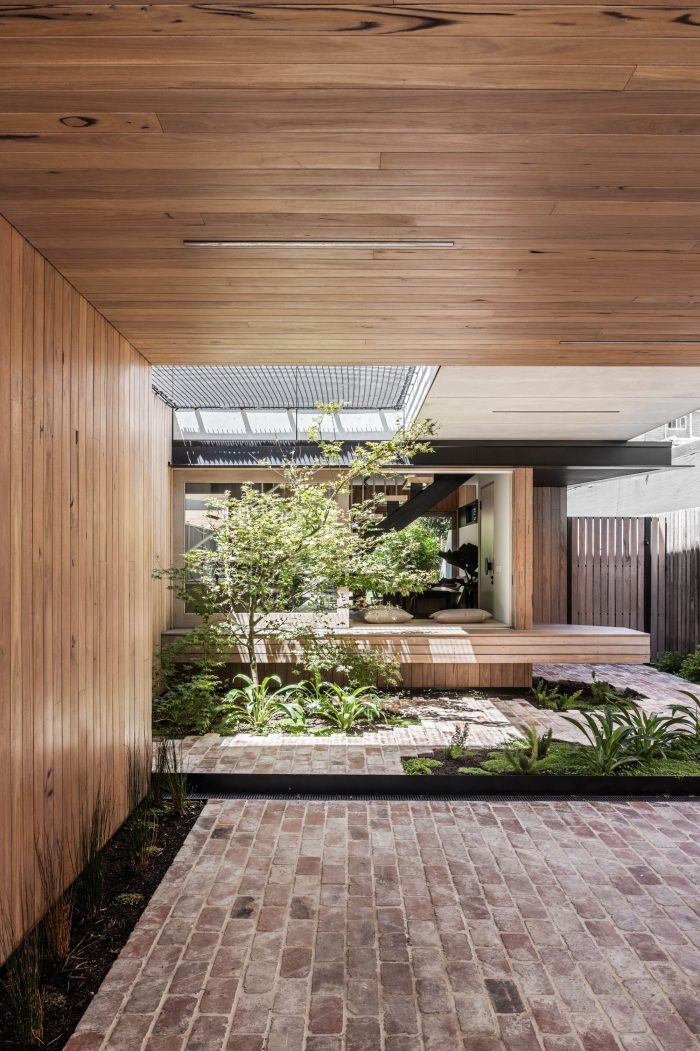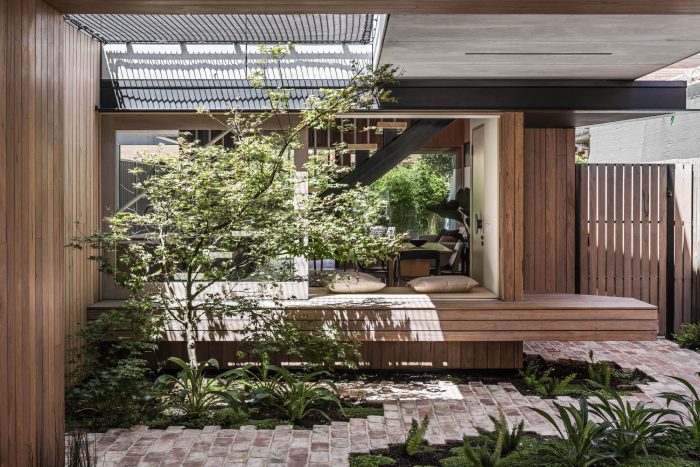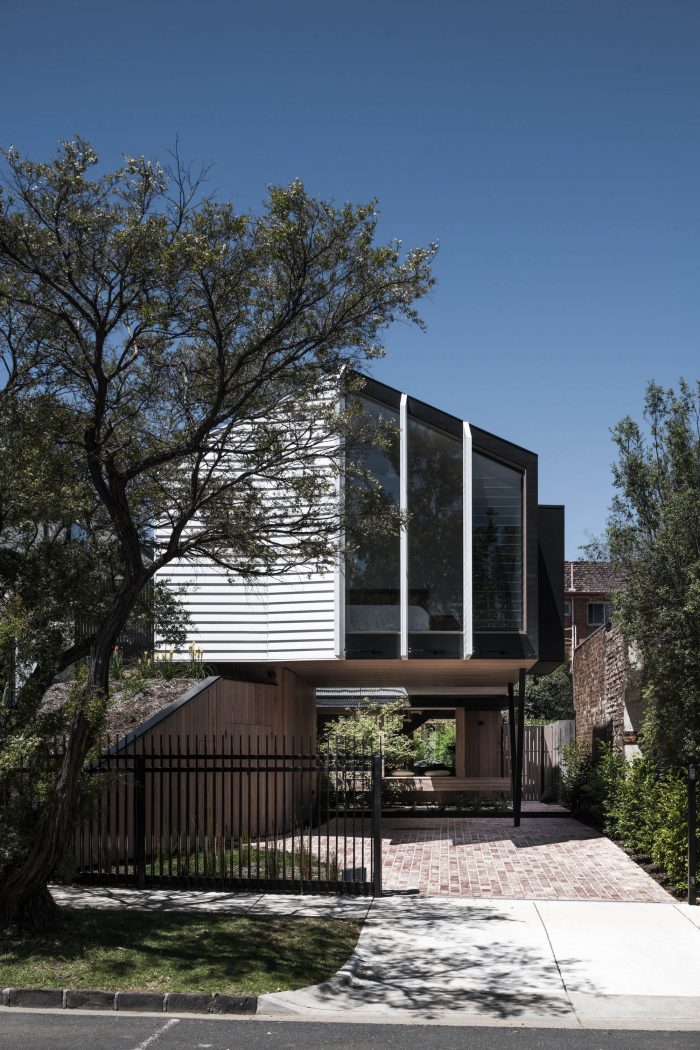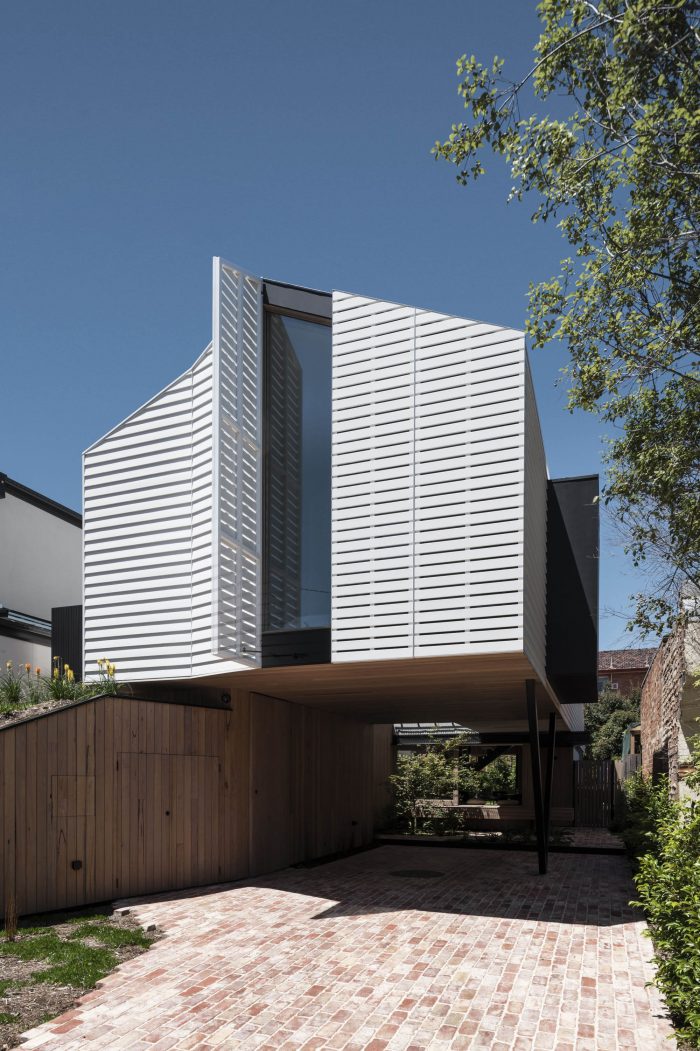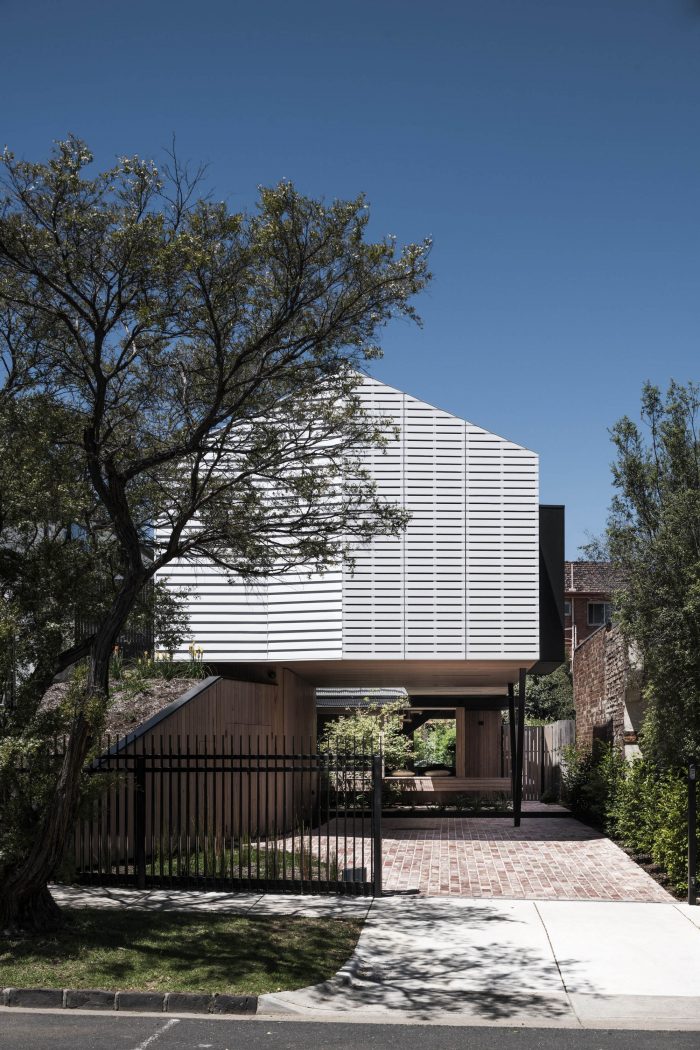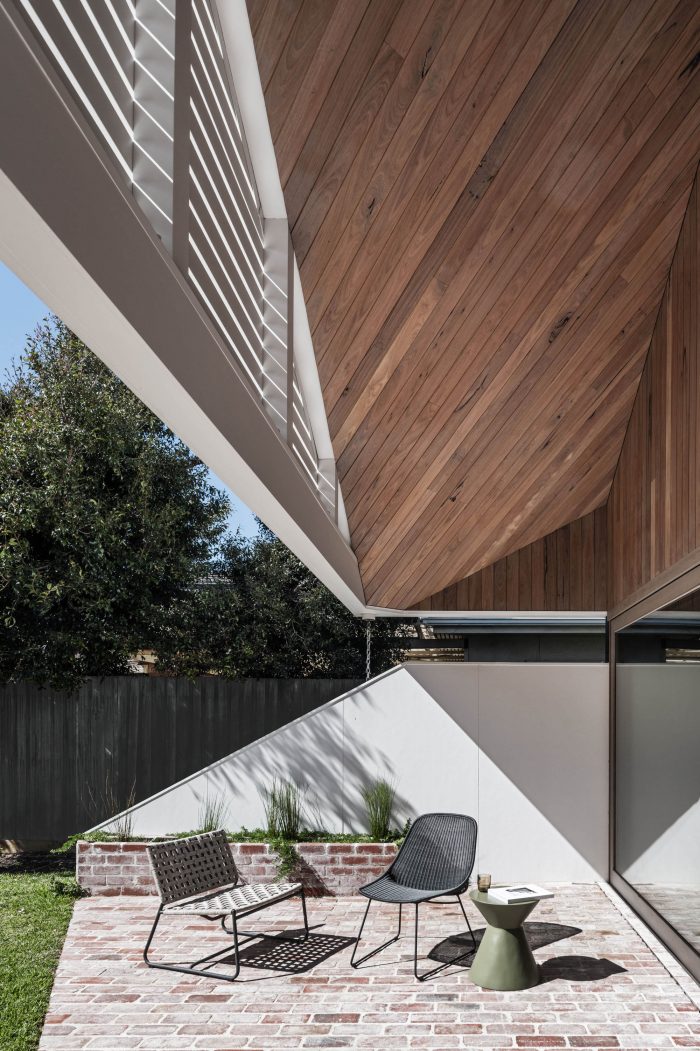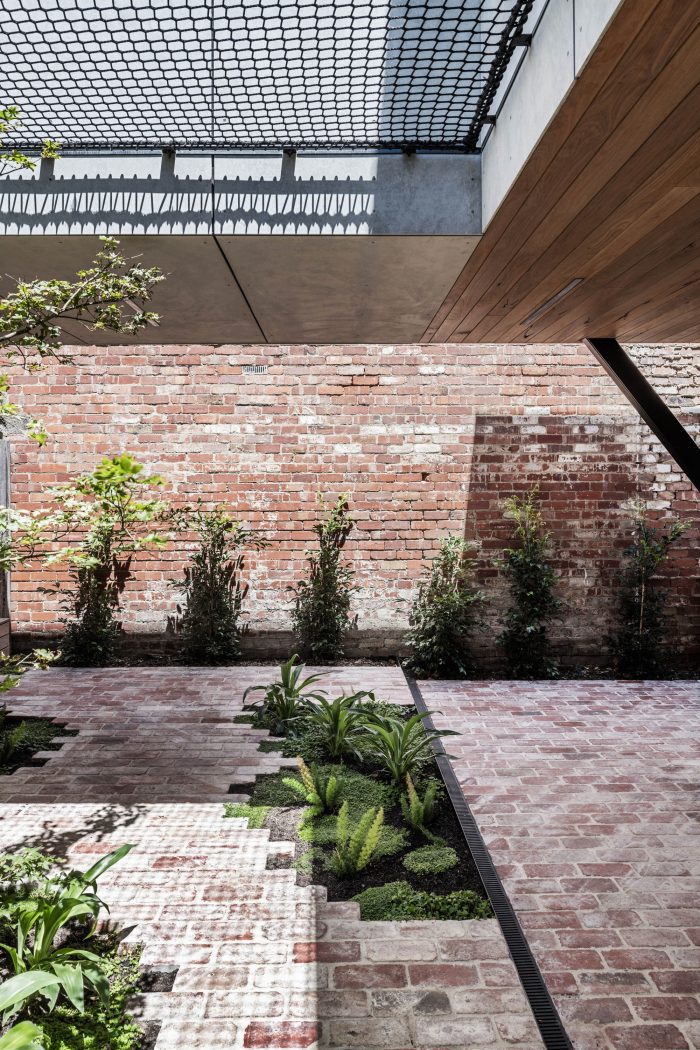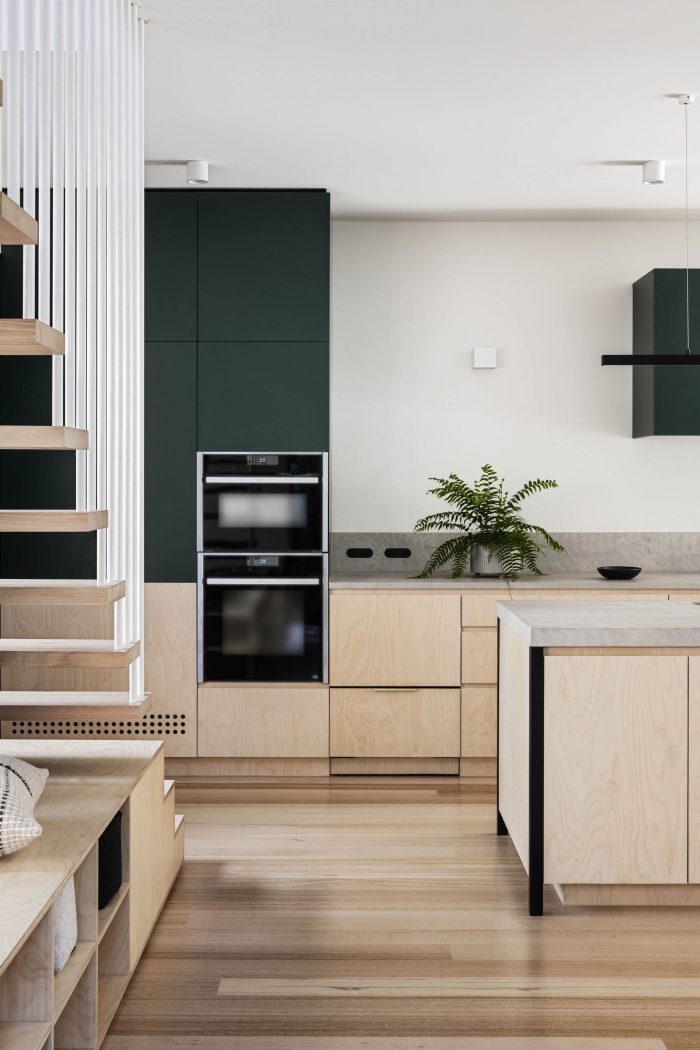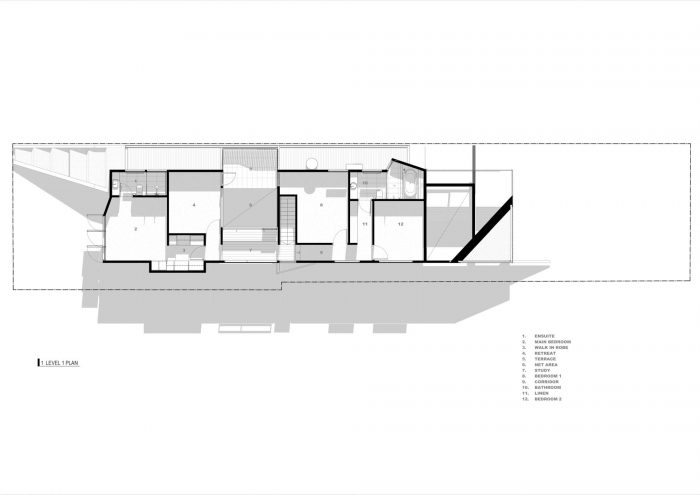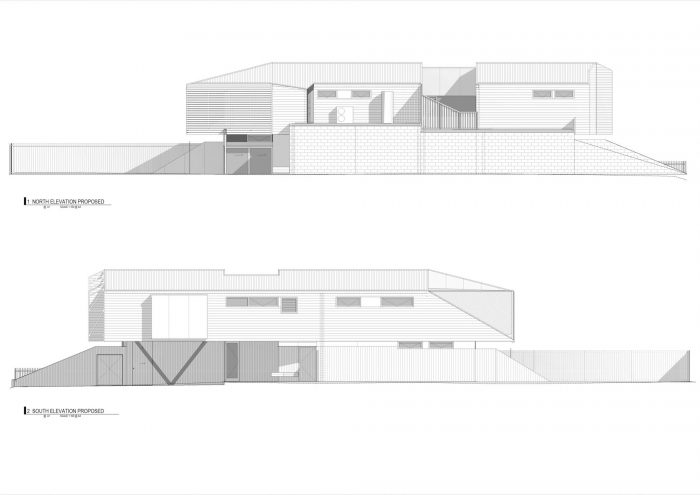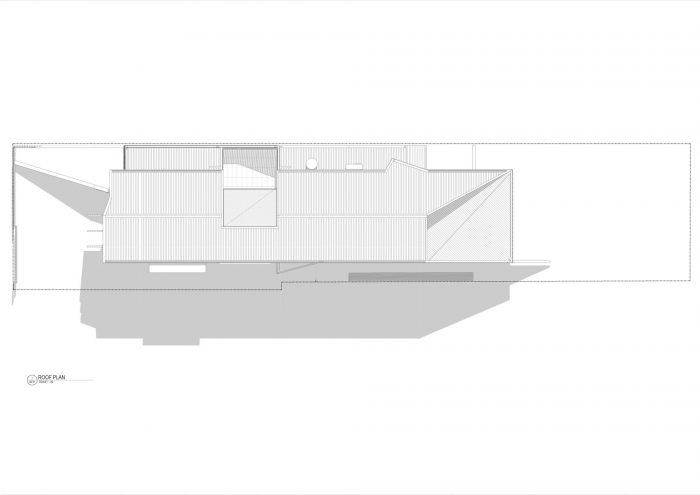Pop-up House试图在一个以遗产为主的环境中对抗新家庭住宅的现状。新建住宅的常见做法是占据大部分场地,同时保留最小的正面后移,采用强化的纯粹建筑形式,将自己与公共领域的界面隔离开来。
Pop-up House attempts to counter the status quo of a new family home in a predominantly heritage setting. A common approach with new homes is to occupy majority of the site whilst retaining minimal front setback with a fortified sheer built form that shuts itself off from the public realm interface.
我们的方法是创造一个挑战上述概念的住宅,以便在往往是静止的、未被充分利用和遗忘的地方发现机会。注重与城市领域的互动,通过邀请居民、路人和邻居之间的互动机会来促进社区参与感。
Our approach was to create a home that challenges the aforementioned notion in order to discover opportunities in the often static, underutilised and forgotten. Focused on engaging with the urban realm, by inviting opportunities for interaction between inhabitants, passer-by’s, and neighbours to promote a sense of community engagement.
从街道上看,建筑的立面是一个挤压的轮廓,这是对周围熟悉的屋顶形式的同情。建筑物的上层体积盘旋在景观支架之上,创造了一个进入房子的旅程的开始。两侧是邻近的砖墙,成为内部边缘,建立了新旧之间的对话。
When presented from the street the elevation is an extruded silhouette which is a sympathetic nod to the familiar roof forms of the surrounding vernacular. The upper volume of the building hovers above a landscaped mount that creates the beginning of a journey into the house. Flanked by existing neighbouring brick walls, that become internal edges which establish a dialogue between old and new.
悬空的房屋腹部创造了一个地下平台,引导客人通过郁郁葱葱的景观花园进入房屋,在前院创造了一个多方位的区域,可以在程序/用途上进行调整和发展。绿色的景观楔子上种植着本地的植被,这些植被缓缓地向街道正面倾斜,形成了一个与公共领域互动的山坡。从一开始,我们的客户就认为他们的新家必须与场地边界以外的环境相结合,创造一个视觉上吸引人的公共环境,让邻居和朋友们可以在这里进行非正式的聚会。
The hovering belly of the house creates an undercroft that guides the guests into the house through lush, landscaped gardens creating a multi-faceted zone in the front yard that can adapt and evolve in program/use. The green landscaped wedge is planted with native vegetation which gently slopes back to the street frontage creating a mount that engages the public realm. From the outset our clients felt their new home had to engage with the context beyond the site boundary creating a visually engaging public setting where neighbours and friends can be part of informal gatherings.
这座面积为215平方米的住宅在建筑上需要有一定的限制和双重用途。中间/模糊的空间必须包含多个项目。其中一个项目是位于大道上的书房,它激活了一个未被充分利用的门槛。绿色的楔子有利于自行车的存放,建筑服务和蓄水系统。
This modest 215 m2 home required constraint and duality of uses in its architecture. The in-between/ambiguous spaces had to contain multiple programs. One of such programs is the study which is positioned within a thoroughfare activating an otherwise underutilised threshold. The green wedge facilitates bicycle storage, building services and a water retention system.
室外露台延伸到一个网状区域,利用中间的空间创造更多的游戏和活动区域,同时允许光线穿透前院。为了进一步消除多余的想法,住宅的底层可以作为车棚,车间和非正式娱乐区的延伸。这个可塑造的区域提供了长期的灵活性,以适应不同的用途。
Outdoor terrace extends into a netted area, utilising the in-between space to create additional zones for play and activation whilst allowing light to penetrate the front courtyard. To further remove the idea of redundancy the underbelly of the dwelling doubles up as a carport, an extension of the workshop and informal entertaining area. This mouldable zone provides long term flexibility for adaption of use.
通过不同的花园区和场地后方的大花园,增加了场地的通透性。墙体、屋顶和地板都采用了高质量的隔热材料,板下隔热和热断木框架双层玻璃窗。在可能的情况下,我们已经采购了当地的行业,材料和配件。Pop-Up House的设计是耐用和持久的。屋顶是用Surfmist Colorbond包覆的,它减少了房屋内的热量积聚和城市中的热岛效应。
Increased site permeability through various garden zones and a large garden at the rear of the site. High quality thermal insulation throughout the walls, roofs and floors with under slab insulation and thermally broken timber framed double glazed windows. Where possible we have sourced local trades, materials and fittings. The Pop-Up House is designed to be durable and long lasting. The roof is clad in Surfmist Colorbond which reduces heat build-up in the home and the heat island effect in our cities.
墙面主要是白色油漆的耐候板,并有银顶白蜡覆层的点缀。屋顶的形式允许战略性地放置太阳能电池板,以获得最佳的收集。在前院埋设了一个5000升的水箱。所有的屋顶水都被收集起来,并重新用于冲洗厕所和花园灌溉。定制的机械操作屏风被战略性地安置在一楼西侧立面,以控制遮挡西方阳光,同时允许最大限度地灵活管理太阳能通道和自然带的景观。
The walls are predominantly white painted weatherboards with accents of silvertop ash cladding. The roof form allows for strategic placement of solar panels for optimum capture. A 5000-litre water tank has been buried in the front yard. All the roof water is captured and reused to flush toilets and garden irrigation. Custom fabricated mechanically operable screens are strategically positioned on the first-floor western façade for controlled screening of the Western Sun whilst allowing for maximum flexibility in managing solar access and views to the nature strip.
建筑师:FIGR Architecture & Design
面积:198平方米
年份:2021年
摄影:Tom Blachford
制造商:CSR, Colorbond, James Hardie, MAXI Plywood, Phoenix, Richmond Lighting, TBC, Tiento Tiles
造型:Ruth Welsby
建造商:Natural Build VIC
工程:Meyer Consulting Engineers
景观:Mud Office
建筑测量师:Michel Group Building Surveyors
城市:Essendon
国家:澳大利亚
Architects: FIGR Architecture & Design
Area: 198 m²
Year: 2021
Photographs: Tom Blachford
Manufacturers: CSR, Colorbond, James Hardie, MAXI Plywood, Phoenix, Richmond Lighting, TBC, Tiento Tiles
Styling:Ruth Welsby
Builder:Natural Build VIC
Engineering:Meyer Consulting Engineers
Landscape:Mud Office
Building Surveyor:Michel Group Building Surveyors
City:Essendon
Country:Australia

